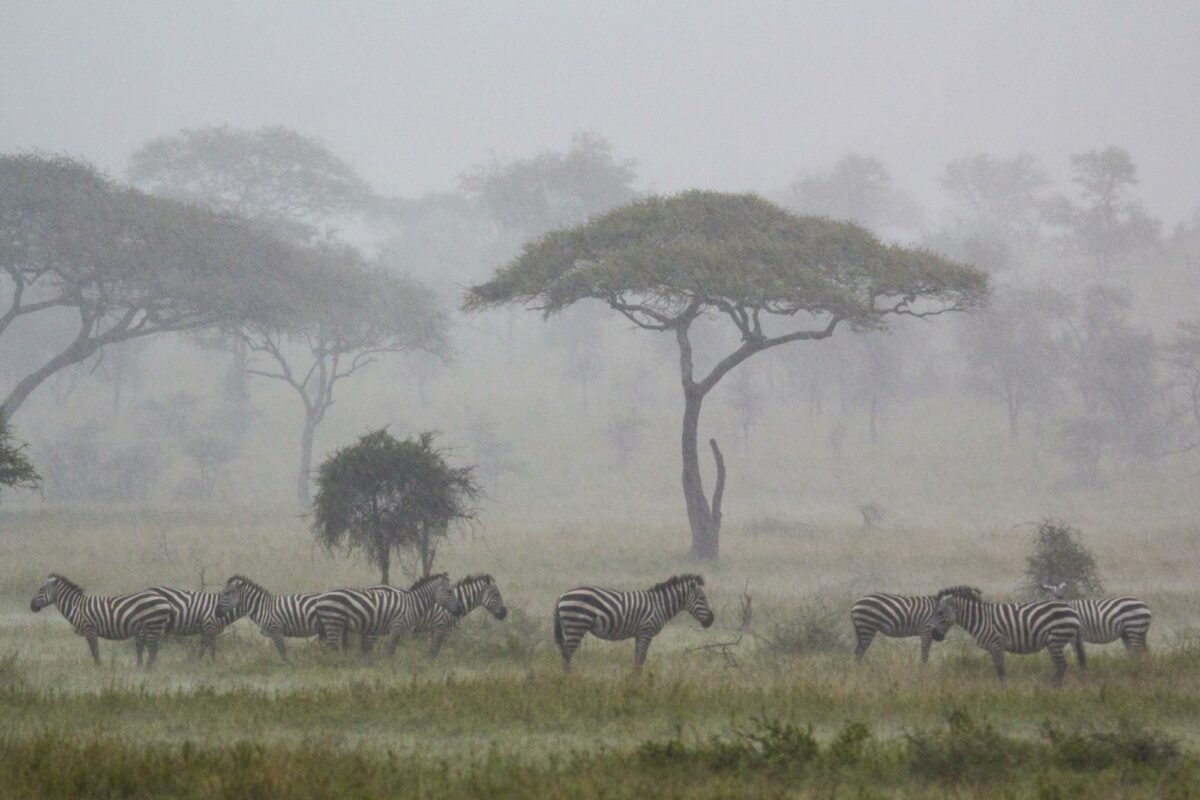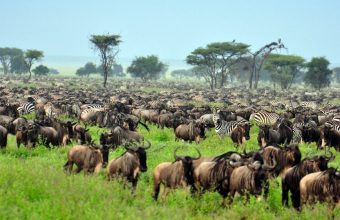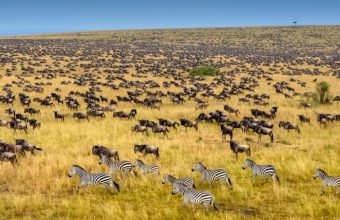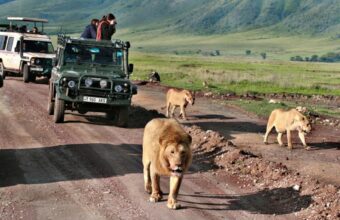Where Is The Wildebeest Migration In November?
In November the ‘short rains’ start to fall in the Mara.
The plains return to their emerald green hue, and the migration is on the move southward, back to Tanzania’s Serengeti. Photographers revel in the heightened big cat activity and the stormy skyscapes.

Zebra enjoying rainy season on the Serengeti
Where is the wildebeest migration in November?
As the rest of the herds head back across the border, the Serengeti once again becomes the migration hotspot. The wildebeest and zebras are on the move, and most of them can be found in the Lobo and the Seronera Valley areas. In their quest for nutrition-rich grass, they form long columns stretching all the way to the central parts of the Serengeti.
Although it’s the wet season, the Serengeti is still an amazing place to experience. Photographers love to capture the skyscapes as huge, dramatic thunder clouds roll in over the savannah. You can expect cooler weather, but this isn’t necessarily a bad thing. The animals become more active during this time of the year, especially big cats.
Is November a good time to see the great migration?
The rains from November to March are quite random and usually don’t last for more than a few hours. There’s a chance of heavier rain during this period but expect less than in the heavy rains of April. If it does rain, it will usually clear in one or two hours, and it’s more than likely that the shower will be localised. November is shoulder season, offering a combination of lower accommodation prices with good wildlife watching.
The silver lining of the wet season
Although the heavy rains are starting to fall, November is one of the best months if your intention is to see the big cats. As the wet season begins, plenty of predators seek out newborn herbivores, and the action can get very intense.
Photography also thrives. Many specialised photographic safari companies offer tours solely for taking pictures of the cats during this period. Watching the big storm clouds roll in can be a very moving experience, especially for photographers. The dark skies, the thunder and lightning all align to create beautiful dramatic backgrounds, and the light is ideal — particularly if you have a big lion hunting a zebra in the frame.
But storm clouds aren’t for everyone. If you do want to avoid the rains in November, your best option is to head down to Selous where the rains usually arrive later than other parks in Tanzania. The dry landscapes usually last until early December.











